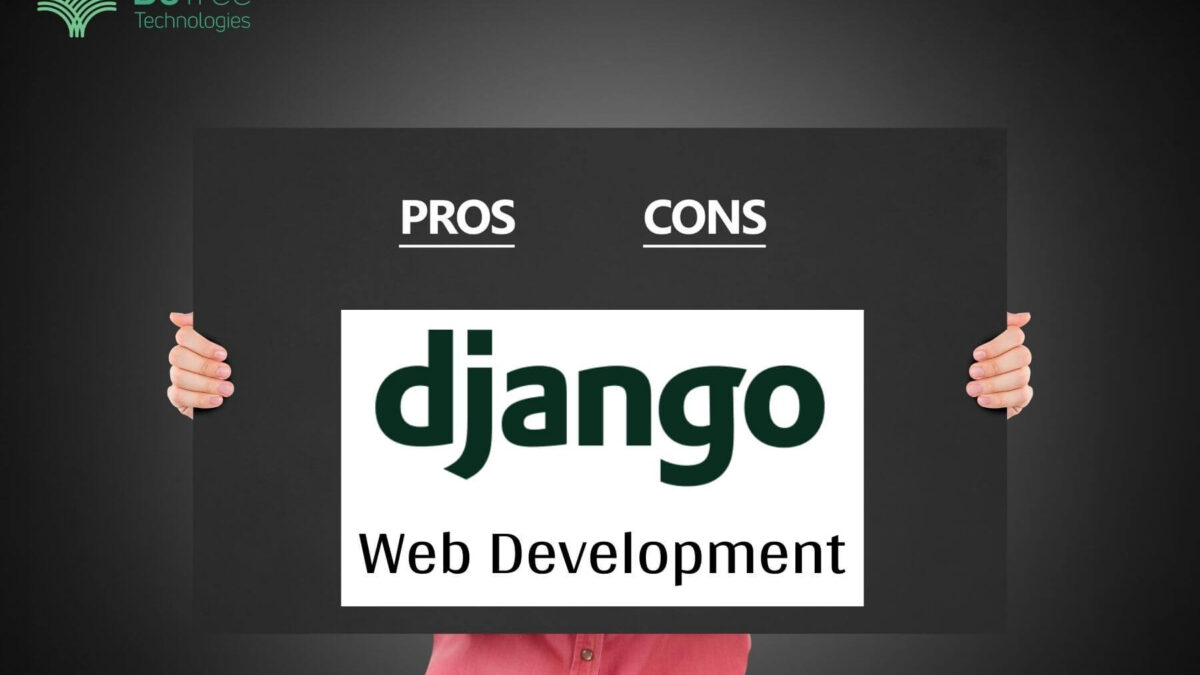
Pros and Cons of Django Web Framework
Python is the 3rd most popular programming language in 2020. It is a powerful, dynamic, syntax-simplified, programming language used for high-level web application development and machine learning apps. And if you know about Python, you’ve probably heard of Django web framework – the most used Python framework.
Django development has gained much fame due to its computation capabilities. Today, Django stands as one of the most used web development frameworks.
Developers widely prefer Django web development for its “batteries included” philosophy. It means that as a Django developer, you don’t have to install separate libraries for adding functionalities.
Django provides a plethora of features to add standard functionalities in any kind of web application.
Django Web Framework and the “batteries included” philosophy
Django is an MVT-based, open-source web application development framework which is written in Python. It enables clear coding and reduces complexities in web development.
Python web development with Django becomes easier because Python lacks built-in web development capabilities. Django provides functionalities which compensate for that gap.
Django development is highly popular because of its “batteries included” philosophy. It provides many common functionalities for web development, which saves you from writing code for each and every function.
Django web framework also provides advanced functionalities like ORM, database migration, user authentication, admin panel, and forms.
Django programmers love the framework for its capability to simplify working with databases. It speeds up the development process and enables developers to build scalable applications. Developers also use it because it allows splitting Django projects into multiple applications.
While developers use Django web framework across the world, it has its own pros and cons. Some developers outright love Django while some are happy with their age-old frameworks like Ruby on Rails.
Understanding the advantages and disadvantages of Django development is essential for developers and enterprises who are confused about which framework they should choose for development.
Pros of Django web development
Many developers prefer Django. It has marked its dominance in the machine learning and AI sector because of the computational and statistical capabilities. Some of the main advantages of Django development are listed below.
- Batteries included
- The first and foremost benefit of Django web development is its batteries included feature. Instead of writing the code, developers can use readymade packages for adding functionalities.
- This saves a huge amount of time for the developers, and they can focus on adding advanced functions.
- You can use the packages made by world-class community members as the Django web framework is open source.
- You can implement authentication with auth package, admin interfacing with admin package, session management with Sessions package and so on.
- Because all the features are included in the framework, Developers can just import these packages and start building applications in no time.
- Flexible framework
- Unlike Ruby on Rails, Django doesn’t follow the convention over configuration mechanism. Since it is written in Python, a versatile programming language, Django for web development provides more flexibility and dynamism to the developers.
- They can configure the framework on-the-go according to their needs and build web applications.
- Being written in Python, web development using Django provides excellent support for external libraries and packages. You can easily import a package in Django without any security concerns.
- In Django, more emphasis is placed on explicit programming rather than implicit programming, making it one of the ideal frameworks for applications that require rapid changes.
- Faster development
- One of the most important pros of Django development is that it enables faster development. Startups and enterprises can utilize it to develop rapid MVP and get more time to market the product.
- Django has benchmarks to check the internal development speed. With the proper configuration, Django web development provides optimization for web applications.
- While Python web development with Django might be considered a little slow due to Python’s configurations, Django compensates for that.
- The framework’s configuration and architectural design are that it allows using multiple components at once, enabling rapid development. Developers can work parallelly without any loss of development speed.
- REST framework for APIs
- APIs are essential to add advanced level features to a web application. Django REST framework is a Python library which enables building APIs for the application.
- The framework has a modular and configurable architecture which makes API development easier.
- Django programmers love the REST framework with Django as it provides them with powerful API functionality.
- The REST framework has a built-in API browser for testing API endpoints. Django web framework provides authentication and permissions rules to work flexibility with the framework.
- The library provides customizations that are not supported by other frameworks like FLASK, a popular Python development framework.
- Machine learning capabilities
- Django app development is preferred by developers working with machine learning algorithms. FLASK can be used for deploying machine learning models, but it is a lightweight framework.
- Django is more advanced and is compatible with some of the powerful machine learning libraries like PyTorch, NumPy, etc.
- Django’s computational and statistical capabilities make it the ideal platform for machine learning applications.
- Enterprises are exploiting the power of Django for web development in their applications.
- Django provides regression and prediction capabilities, enabling intelligent application development.
Why Django is the Best Web Framework for Your Project : Learn More
Cons of Django web development
While Django web framework is robust and known for its development capabilities, it is still not the primary framework for a lot of programmers. There are a few disadvantages of Django, and old-time developers have a hard time making the transition. Some of the cons of Django development are listed below.
- No conventions
- Most programmers dislike Django web development because of the lack of conventions.
- Unlike Ruby on Rails, the framework doesn’t have a set of principles that developers can follow for web development.
- It makes things difficult for developers who have worked on frameworks with Convention over Configuration.
- Often, configuring on-the-go leads to mismatched components, and many developers are not comfortable with it. Early Django developers faced this problem. Since everything has to be defined as development progresses, sometimes the development speed can be much slower than anticipated.
- Not for smaller projects
- Django web framework is not suitable for smaller projects and products with only a few features and requirements.
- Django calls for a lot of coding, which takes server processing time and bandwidth while development. It is generally used for projects which need scaling or are going to be launched on a large scale.
- Web development with Django for small projects is difficult because the framework can confuse developers with its unique functionalities.
- Small scale developers don’t want a high-end framework for development. They can easily work with Ruby on Rails for building their application. In this sense, only scalable projects must utilize Django.
- Monolithic framework
- For all the “batteries included” in Django, the framework is monolithic. It has a meagre count of dependencies which makes it difficult to use.
- Django programmers consider the framework as a single package, which is not a good thing. The lower dependencies Django have, the more code, developers will have to write.
- Django doesn’t encourage developers to learn Python packages and tools. Instead, Django development focuses on providing programmers with more and more code-oriented programming.
- Using libraries is easy in Django, but considering it as a single package for web development is a mistake made by many developers.
- Steep learning curve
- One of the primary disadvantages is that the Django web framework has a steep learning curve.
- Although it is a clear and simple framework, it is written in Python, which makes it difficult to learn. Django comes with a lot of features and configuration that can’t be easily understood by developers.
- Developers making a switch from other languages to Python development with Django often find it harder to learn. The framework has different syntax due to Python, and developers don’t get the hang of it quickly.
- They have to learn it for a long time before they can become experts in that. Even though the framework is old and evolves slowly, it is still one of the hardest to master.
- Multiple request issue
- Django is different from most frameworks, but sometimes it is also a disadvantage. Unlike most web development frameworks, Django can’t handle multiple requests simultaneously.
- They are requests for individual processes, and it takes time for each request to be fulfilled. In this sense, Django fails to provide speedy development.
- Managing multiple requests is offered by almost all the frameworks in the market. The reason Django doesn’t support multiple requests is that it encourages Django developers to explore individual processes and make decisions.
Keep Reading: Django vs Ruby on Rails Comparison
Should you consider Django for web development?
Django web framework is increasingly becoming a popular choice amongst developers and enterprises. It is a robust framework for building large-scale enterprise applications. However, for small apps and single page websites, Django is probably not the right choice.




